- Joined
- Oct 9, 2007
- Messages
- 47,653 (7.44/day)
- Location
- Dublin, Ireland
| System Name | RBMK-1000 |
|---|---|
| Processor | AMD Ryzen 7 5700G |
| Motherboard | Gigabyte B550 AORUS Elite V2 |
| Cooling | DeepCool Gammax L240 V2 |
| Memory | 2x 16GB DDR4-3200 |
| Video Card(s) | Galax RTX 4070 Ti EX |
| Storage | Samsung 990 1TB |
| Display(s) | BenQ 1440p 60 Hz 27-inch |
| Case | Corsair Carbide 100R |
| Audio Device(s) | ASUS SupremeFX S1220A |
| Power Supply | Cooler Master MWE Gold 650W |
| Mouse | ASUS ROG Strix Impact |
| Keyboard | Gamdias Hermes E2 |
| Software | Windows 11 Pro |
ASRock has a pretty comprehensive lineup of upcoming Socket LGA1851 motherboards based on the top Intel Z890 chipset, which the company will launch alongside the new Intel Core Ultra 2-series "Arrow Lake-S" desktop processors later this month. The company's Z890 lineup has been leaked to the web by VideoCardz. The lineup covers nearly every brand extension by ASRock, addressing a wide category of PC users, from the entry level that just wants an office desktop to harness the CPU power of the new processors, to the two distinct classes of the enthusiast segment—one which overclocks, and the other that needs every possible premium I/O from this platform, with the bulk of the lineup targeting gaming PC builders across price-segments.
At the very top are ASRock Z890 Taichi OCF and the ASRock Z890 Taichi. The Taichi OCF is the spiritual successor to the OC Formula series by ASRock targeting professional overclockers. It has the strongest possible CPU VRM solution from the company, the largest selection of overclocker-friendly features, and a 1 DIMM per channel (1DPC) memory configuration, for the highest possible memory overclocks. The Taichi OCF has most if not all of the I/O goodies ASRock has to offer. For this, you'll have to seek out the regular ASRock Z890 Taichi, with its four DDR5 memory slots, nearly the same overclocking feature-set as the Taichi OCF, but some added toys, such as Thunderbolt 4. The Z890 Taichi Lite is an interesting product—it has nearly all features that place it into the high-end segment, such as that 8-layer PCB, a strong CPU VRM, and premium onboard audio, among others; but skips on the bulk of the dramatic flair of the Z890 Taichi.
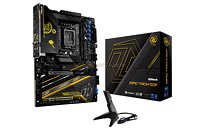

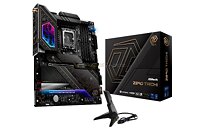
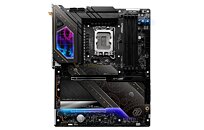
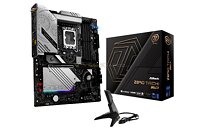
We now enter the meat of ASRock's lineup, with the Phantom Gaming (PG) series, targeting gaming PC builds. There's plenty of meat on the bone for overclockers, although the main audience is still PC gamers. The four products in the series are differentiated by connectivity features, CPU VRM phases, and other minor bits, such as the quality of the onboard audio CODEC, the WLAN card, etc. At the very top is the ASRock Z890 Phantom Gaming Nova, followed by the ASRock Z890 Phantom Gaming Riptide WiFi, and lastly the ASRock Z890 Phantom Gaming Lightning WiFi. The company's only premium Mini-ITX form-factor motherboard is the ASRock Z890I Phantom Gaming Nova.
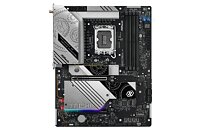
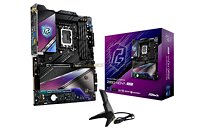
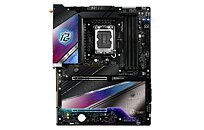
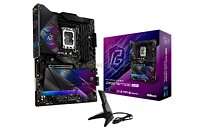
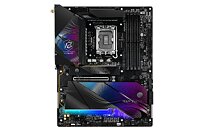
There are two distinct mid-range segment motherboard models from ASRock. The Z890 Steel Legend WiFi comes with a white PCB solder-mask, silver/white heatsinks all around, and a feature-set that roughly resembles that of the Z890 PG Lightning WiFi. The Steel Legend line of motherboards would fall into the same category as ASUS TUF Gaming Plus, or the MSI MAG Tomahawk. The ASRock Z890 LiveMixer WiFi is a mid-range motherboard, with a slightly premium onboard audio solution.
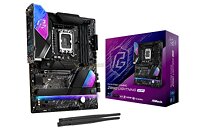
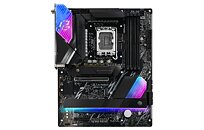
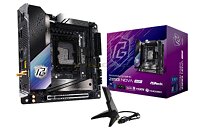
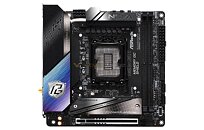
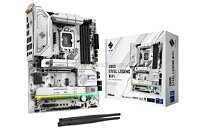
At the tail-end of the lineup are the ASRock PRO series. These are for office desktops or small businesses. Leading the pack is the ASRock Z890 PRO RS WiFi/non-WiFi, and its white PCB variant; followed by the ASRock Z890 PRO A. There are curiously no Micro-ATX Z890 chipset motherboards from ASRock at all.
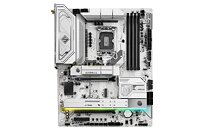
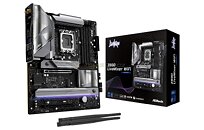
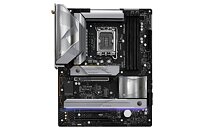
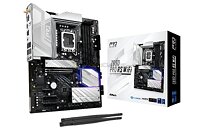
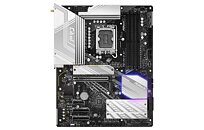
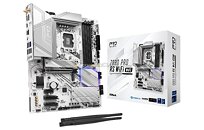
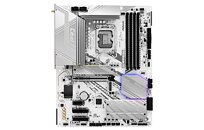
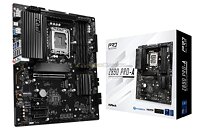
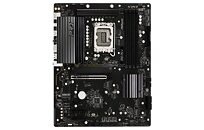
View at TechPowerUp Main Site | Source
At the very top are ASRock Z890 Taichi OCF and the ASRock Z890 Taichi. The Taichi OCF is the spiritual successor to the OC Formula series by ASRock targeting professional overclockers. It has the strongest possible CPU VRM solution from the company, the largest selection of overclocker-friendly features, and a 1 DIMM per channel (1DPC) memory configuration, for the highest possible memory overclocks. The Taichi OCF has most if not all of the I/O goodies ASRock has to offer. For this, you'll have to seek out the regular ASRock Z890 Taichi, with its four DDR5 memory slots, nearly the same overclocking feature-set as the Taichi OCF, but some added toys, such as Thunderbolt 4. The Z890 Taichi Lite is an interesting product—it has nearly all features that place it into the high-end segment, such as that 8-layer PCB, a strong CPU VRM, and premium onboard audio, among others; but skips on the bulk of the dramatic flair of the Z890 Taichi.





We now enter the meat of ASRock's lineup, with the Phantom Gaming (PG) series, targeting gaming PC builds. There's plenty of meat on the bone for overclockers, although the main audience is still PC gamers. The four products in the series are differentiated by connectivity features, CPU VRM phases, and other minor bits, such as the quality of the onboard audio CODEC, the WLAN card, etc. At the very top is the ASRock Z890 Phantom Gaming Nova, followed by the ASRock Z890 Phantom Gaming Riptide WiFi, and lastly the ASRock Z890 Phantom Gaming Lightning WiFi. The company's only premium Mini-ITX form-factor motherboard is the ASRock Z890I Phantom Gaming Nova.





There are two distinct mid-range segment motherboard models from ASRock. The Z890 Steel Legend WiFi comes with a white PCB solder-mask, silver/white heatsinks all around, and a feature-set that roughly resembles that of the Z890 PG Lightning WiFi. The Steel Legend line of motherboards would fall into the same category as ASUS TUF Gaming Plus, or the MSI MAG Tomahawk. The ASRock Z890 LiveMixer WiFi is a mid-range motherboard, with a slightly premium onboard audio solution.





At the tail-end of the lineup are the ASRock PRO series. These are for office desktops or small businesses. Leading the pack is the ASRock Z890 PRO RS WiFi/non-WiFi, and its white PCB variant; followed by the ASRock Z890 PRO A. There are curiously no Micro-ATX Z890 chipset motherboards from ASRock at all.









View at TechPowerUp Main Site | Source







